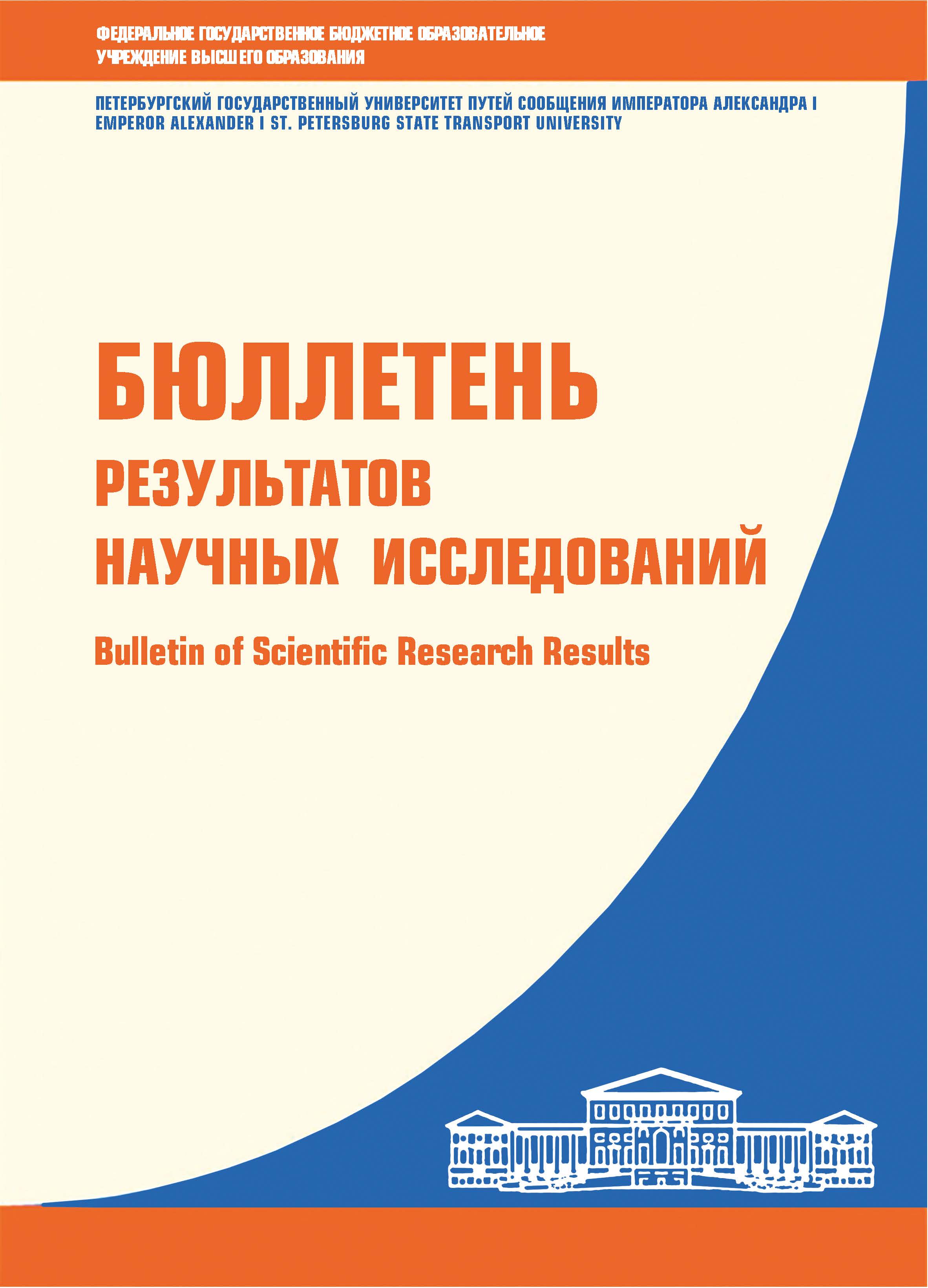Irkutsk, Irkutsk region, Russian Federation
Objective: to develop a methodology for estimating the filling value of the brake cylinders of a freight train, taking into account the amount of air leakage distributed along the length of the brake line. As initial data for determining the pressure of the brake cylinders, use the pressure drop in the brake line along the length of the train, the amount of charging pressure in the head of the train and the discharge stage of the equalizing tank. Methods: experimental study of gas dynamic processes in key volumes of the braking system in the head and tail parts of the train, such as: brake line and brake cylinder. Approximation of experimental data obtained from the braking system of a real train with the derivation of generalized equations. Results: as a result of the research, refined mathematical models were obtained that allow determining the pressure in the brake cylinder of any car, as well as the average pressure in the brake cylinders along the length of the train, taking into account the amount of leakage of the charging pressure in the head of the train and the length of the train in the cars. Practical significance: The application of a new methodology for calculating the filling value of brake cylinders will allow taking into account the influence of the length of the brake line on the braking force of each train car. This will help to correct the equation of train movement and improve the accuracy of calculating the braking distance of freight trains, taking into account the technical condition of the braking network.
brake cylinder, brake line, charging pressure, discharge value, freight train
1. Avtomaticheskie tormoza podvizhnogo sostava: ucheb. posobie dlya vuzov zh/d transporta / V. R. A sadchenko M.: Marshrut, 2006. 392 s.
2. Ivanov P. Yu., Manuilov N. I., Dul'skiy E. Yu. i dr. Opredelenie prichin samoproizvol'nyh srabatyvaniy tormozov poezda v granicah Krasnoyarskoy zheleznoy dorogi // Sovremennye tehnologii. Sistemnyy analiz. Modelirovanie. 2018. № 3 (59). S. 68–76. DOI:https://doi.org/10.26731/1813-9108.2018.3(59).68-76. EDN YSFXTV.
3. Ivanov P. Yu., Mihal'chuk N. L ., Makarova E. I. i dr. Process samoproizvol'nogo srabatyvaniya pnevmaticheskih tormozov gruzovogo podvizhnogo sostava // Sovremennye tehnologii. Sistemnyy analiz. Modelirovanie. 2020. № 1 (65). S. 60–66. DOI:https://doi.org/10.26731/1813- 9108.2020.1(65).60-66.
4. Tormoza zheleznodorozhnogo podvizhnogo sostava: voprosy i otvety (3‑e izd., stereotipnoe) / V. G. Inozemcev. M.: Transport, 1987. 207 s., il., tabl.
5. Buynosov A. P., Fedorov E. V. Opredelenie effektivnosti tormozov zheleznodorozhnogo podvizhnogo sostava v puti sledovaniya // Transport: nauka, tehnika, upravlenie. Nauchnyy informacionnyy sbornik. 2018. № 8. S. 7–11. EDN MFVXUD.
6. Povyshenie effektivnosti pnevmaticheskoy tormoznoy sistemy gruzovogo podvizhnogo sostava v rezhime zaryadki i otpuska: avtoref. dis. ... kand. tehn. nauk / A. A . Hamnaeva. SPb., 2023. 18 s.
7. Pravila tyagovyh raschetov dlya poezdnoy raboty, 2016. 510 s.
8. Razrabotka metoda sistemnogo analiza avtotormoza gruzovogo podvizhnogo sostava: dis. ... dokt. tehn. nauk / V. A . Karpychev. M., 2000. 316 s. EDN QDMCUV.
9. Ivanov P. Yu., Dul'skiy E. Yu., Hamnaeva A. A. i dr. Sravnitel'nyy analiz tormoznyh sistem podvizhnogo sostava s odnotrubnym i dvuhtrubnym pitaniem // Vestnik RGUPS. 2020. № 3 (79). S. 35–42. DOI:https://doi.org/10.46973/0201-727X_2020_3_35.
10. Osipov D. V., Ivanov P. Yu., Dul'skiy E. Yu. i dr. Dvuhtrubnaya tormoznaya sistema na zheleznodorozhnom podvizhnom sostave // Transport Rossiyskoy Federacii. 2022. № 4–5 (101–102). S. 38–41. EDN ZGBZCC.










